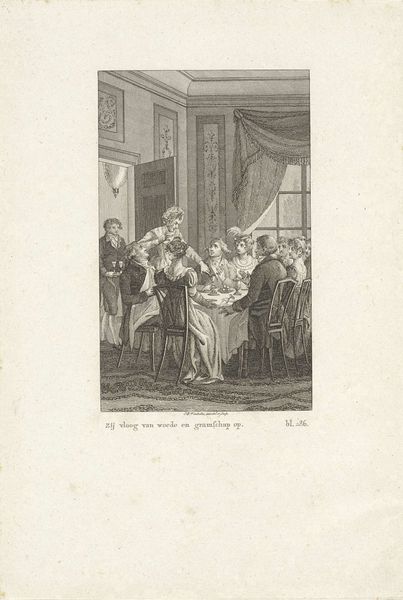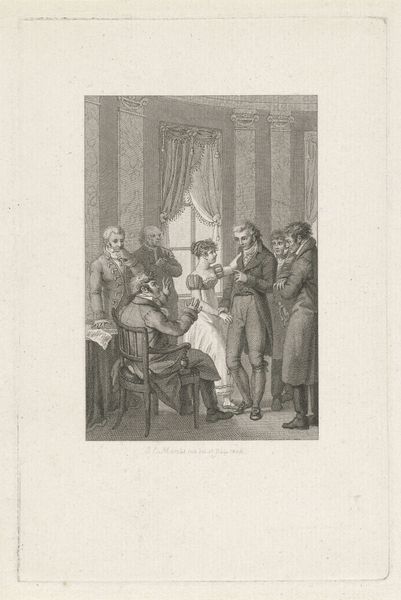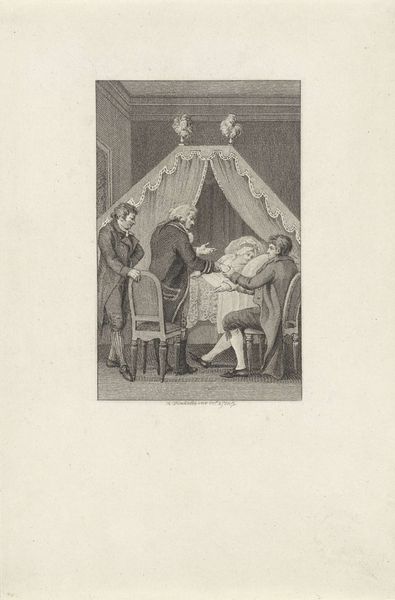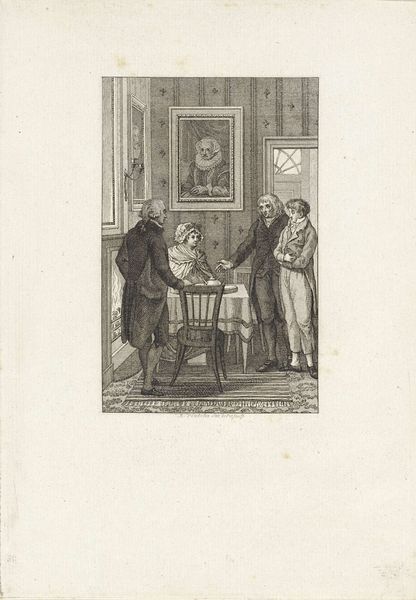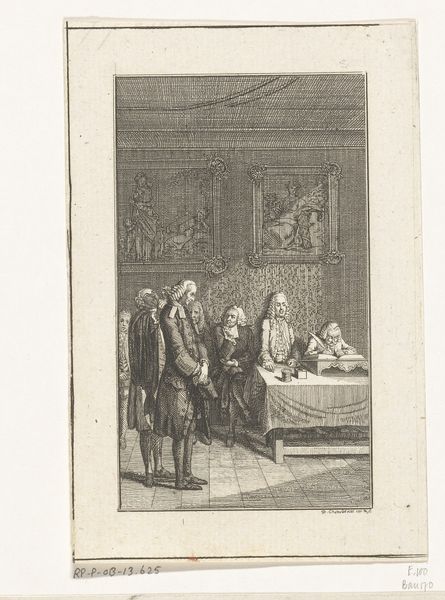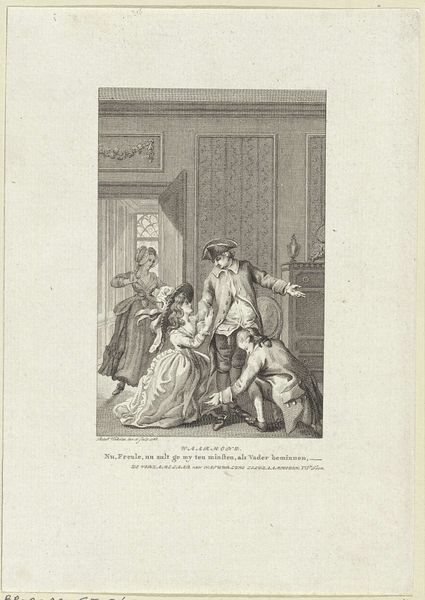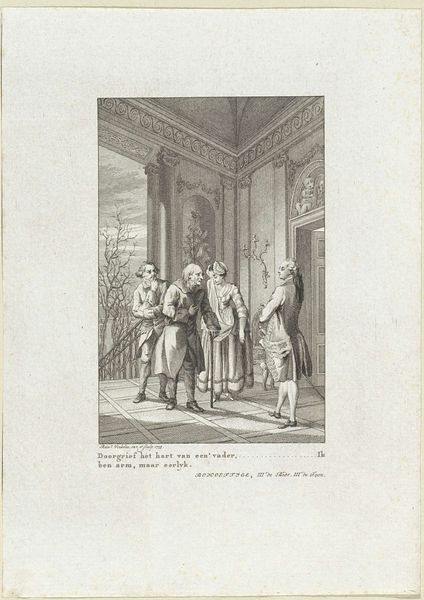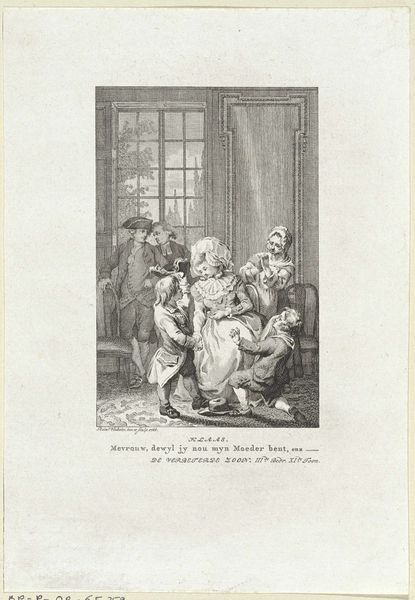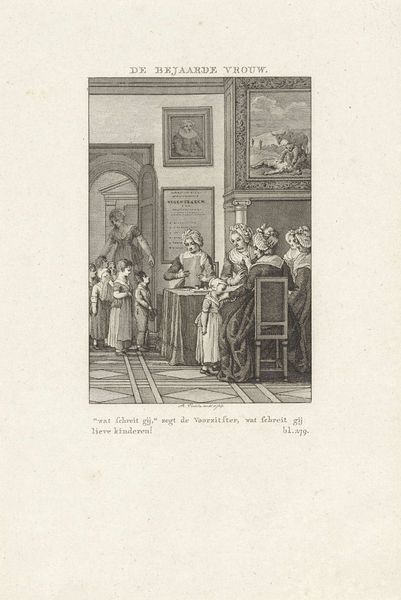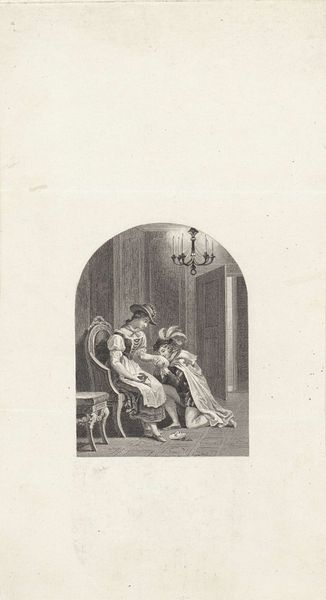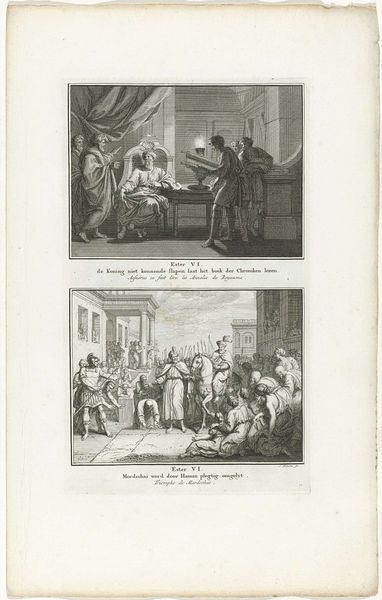
print, engraving
#
neoclacissism
#
dutch-golden-age
# print
#
genre-painting
#
engraving
Dimensions: height 244 mm, width 160 mm
Copyright: Rijks Museum: Open Domain
Curator: This is “Saartje en Cornelis in een theater,” a print made by Reinier Vinkeles around 1804 or 1805, here on display at the Rijksmuseum. I’m struck by the formality of it. Everyone seems so stiff. How should we interpret it? Editor: This is an interesting example of a print. I notice how Vinkeles uses the engraving technique to depict varying textures, from the soft drapery to the hard architectural elements in the background. It also gives us a kind of glimpse into the society of that time. What do you see in this piece? Curator: Formally, the artist presents us with a proscenium within a proscenium. Observe how the figures are meticulously arranged within this constructed space. This immediately begs the question, what does this mirroring tell us? Editor: It's interesting that you point that out. So you’re saying that there’s an intended contrast between the "real" audience and the actors on stage? It seems to give added gravity to a fairly mundane moment. Is that part of it? Curator: Indeed, let's look at the play of light and shadow. How does Vinkeles use the light to emphasize certain figures and diminish others? Is it merely a compositional technique, or does it suggest a deeper narrative? Also, note how the figures' postures indicate varied engagement. Why do you think the male figure stands with his arms crossed? Editor: So he's both literally and figuratively removed from the action on stage? It's the formal elements that convey meaning! Fascinating. Curator: Precisely! The meticulous use of line and form creates a sense of theatricality that speaks to the conventions of both art and life. Editor: Well, seeing it that way really sheds new light on the whole piece! Curator: Agreed. It reveals layers of complexity within this seemingly simple composition.
Comments
No comments
Be the first to comment and join the conversation on the ultimate creative platform.
